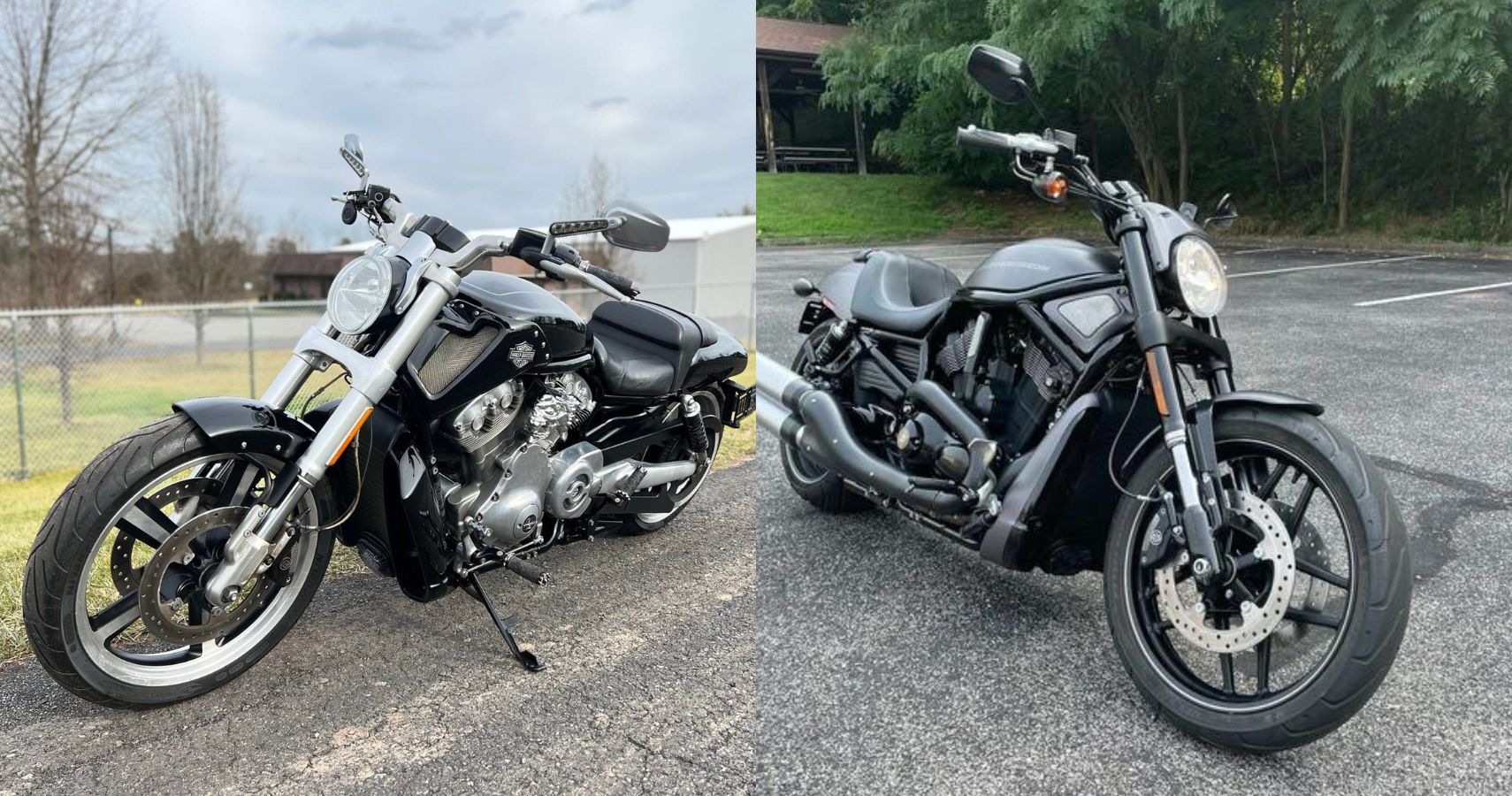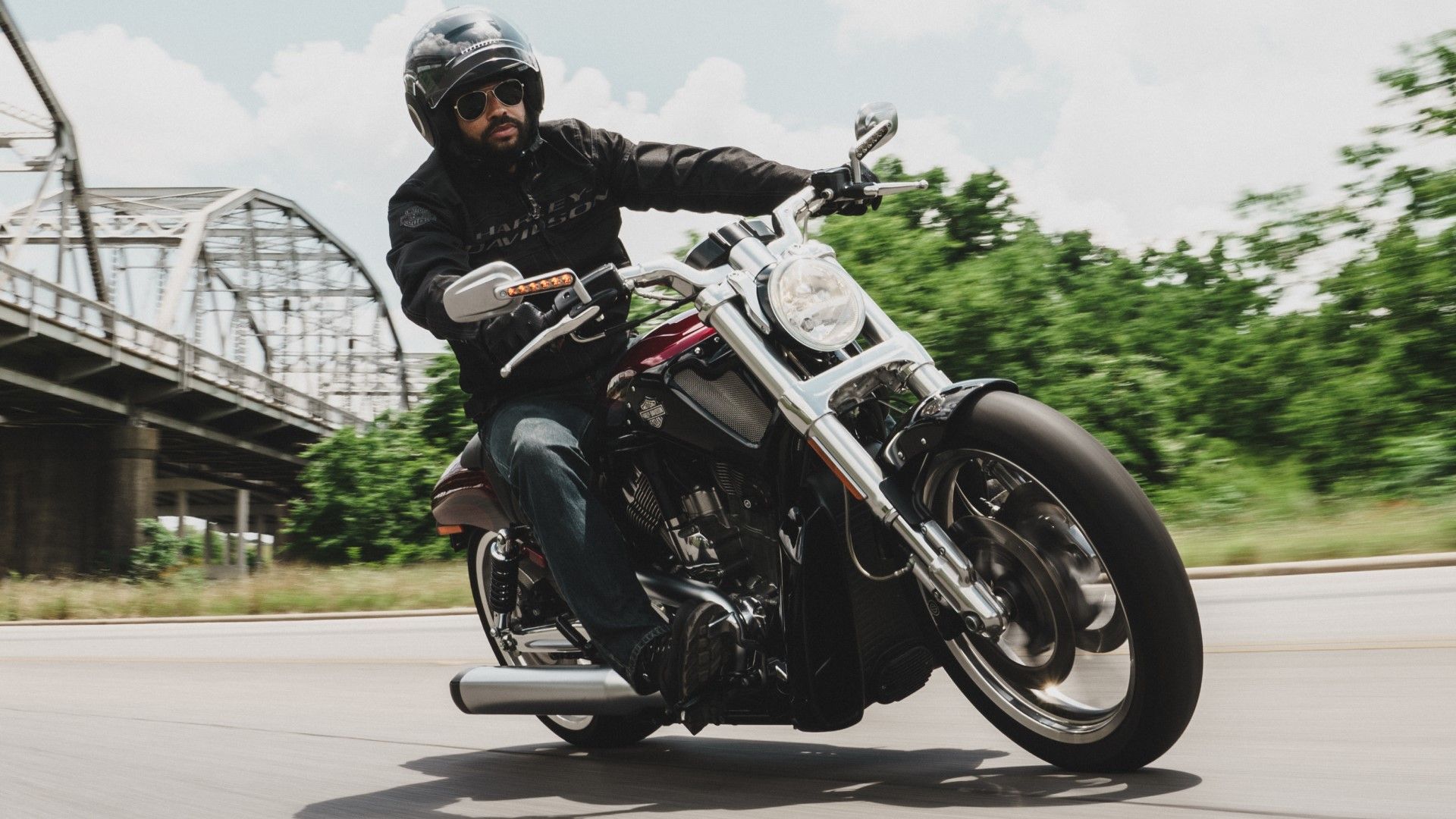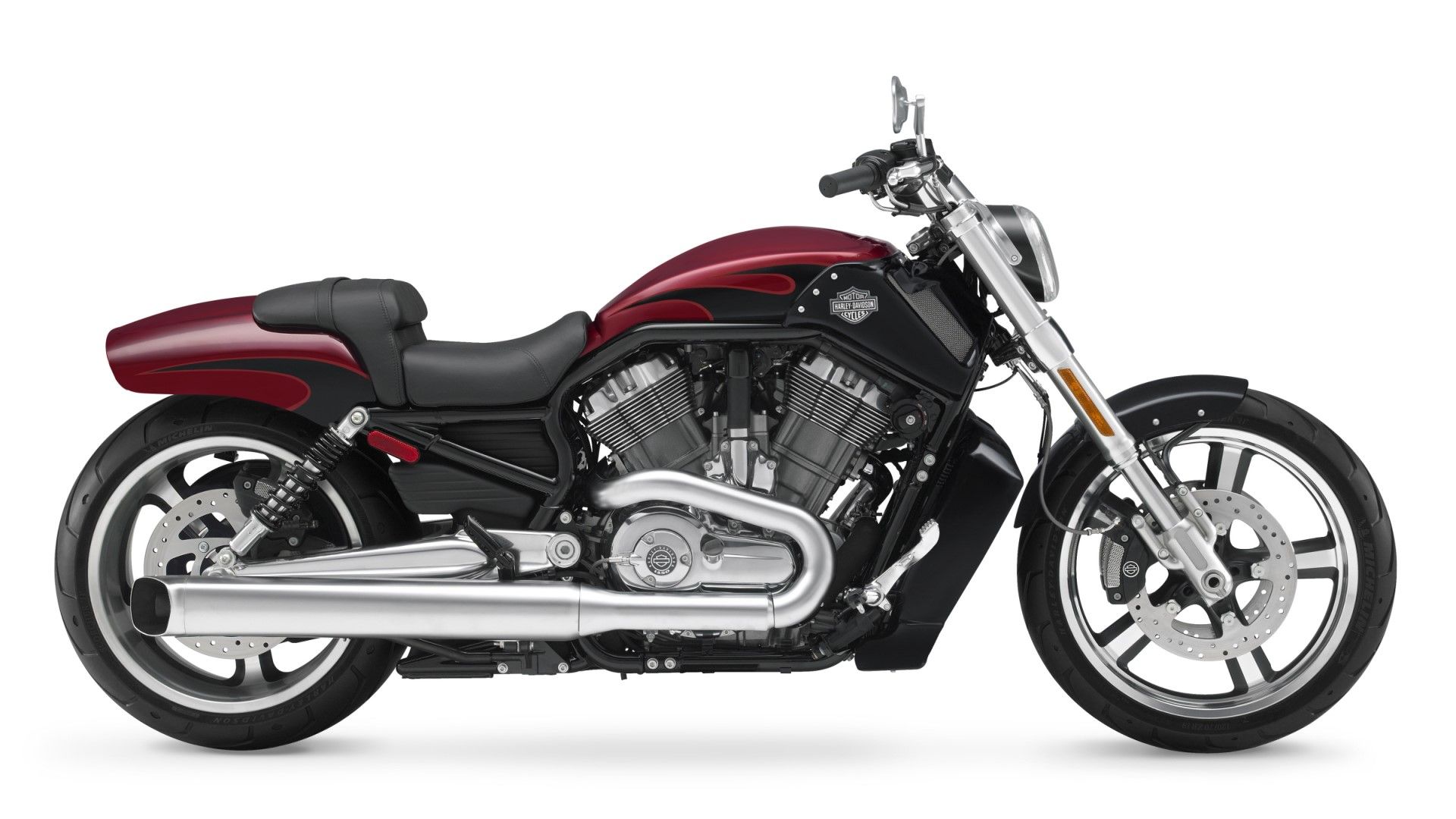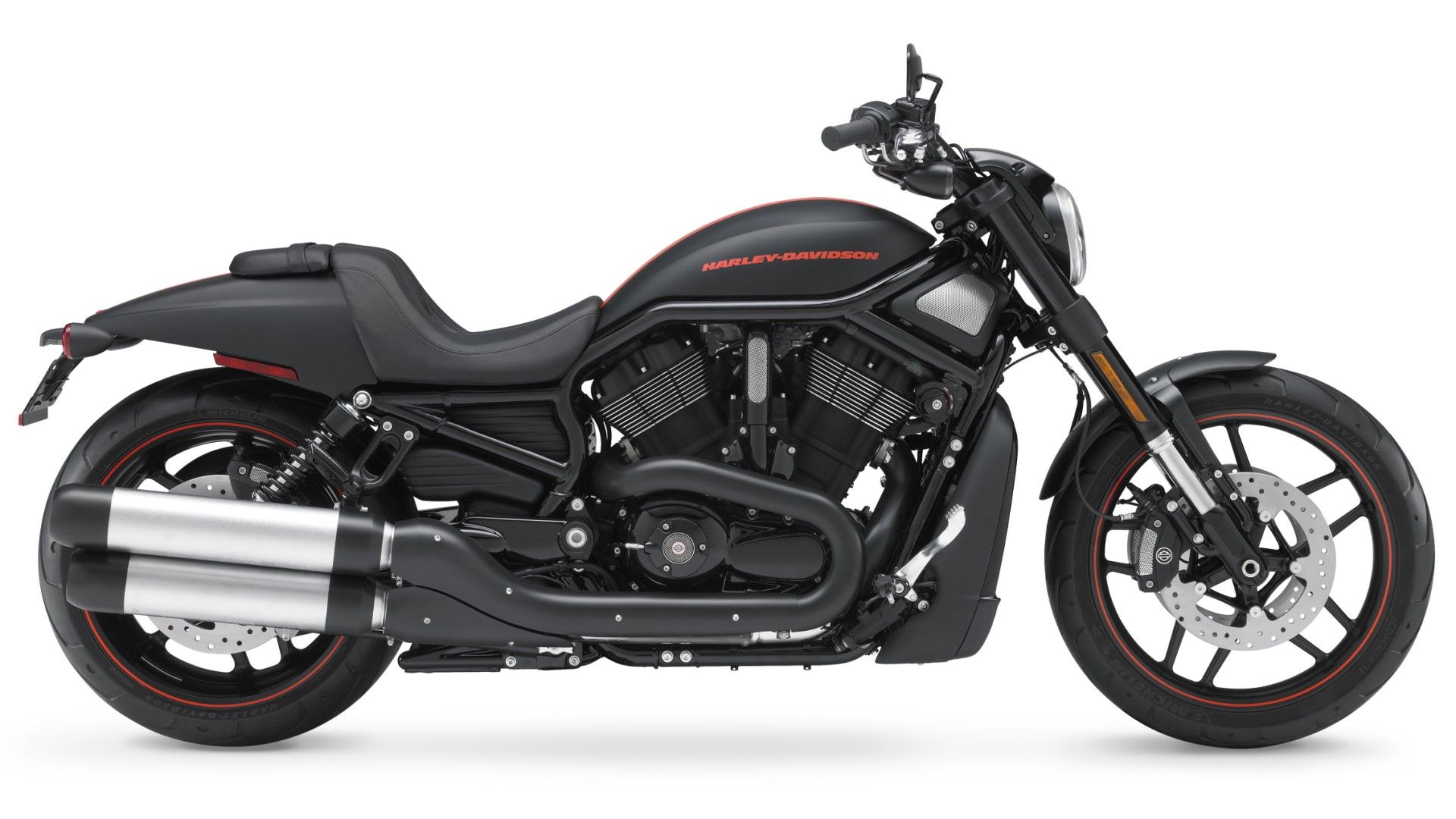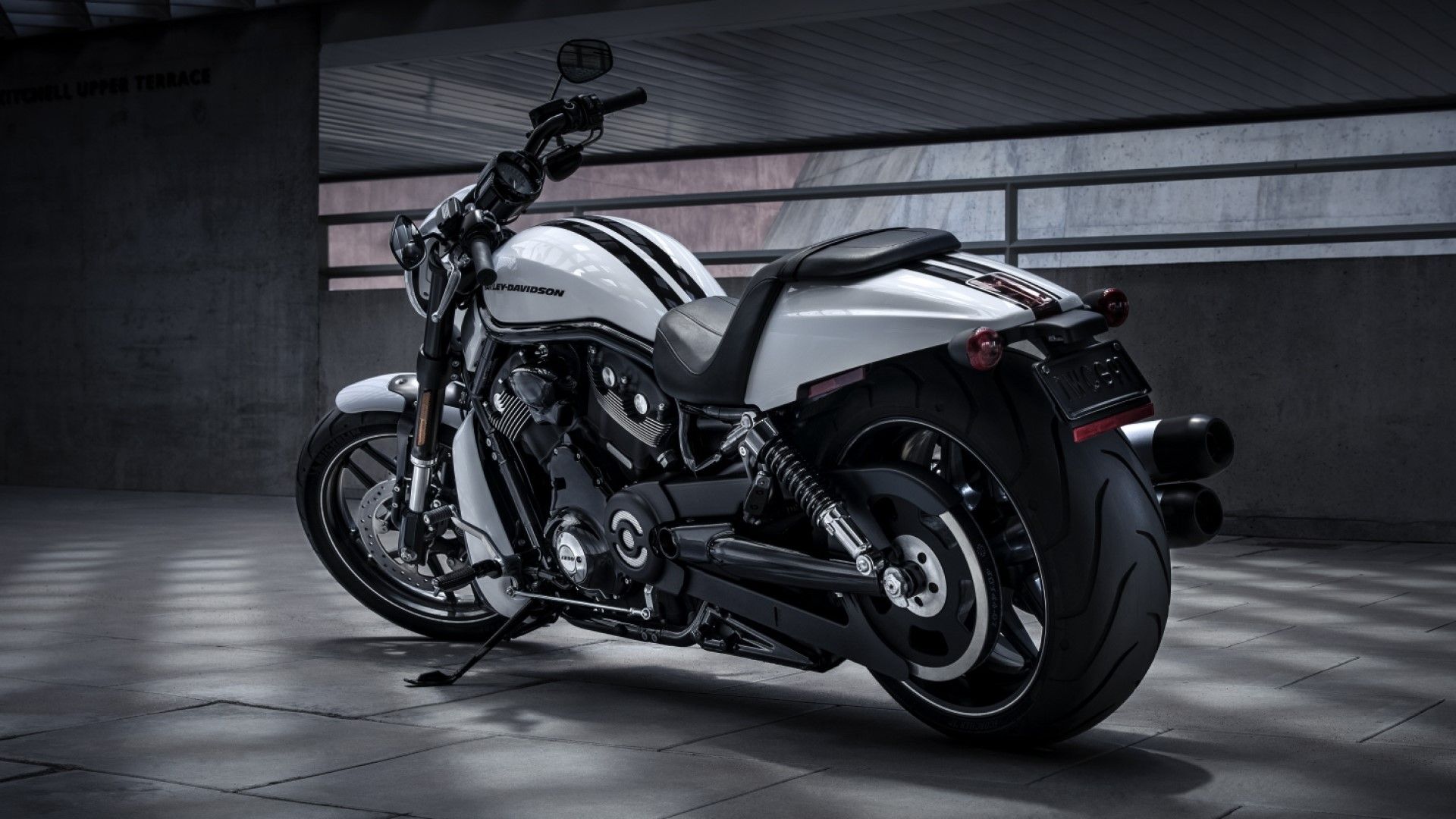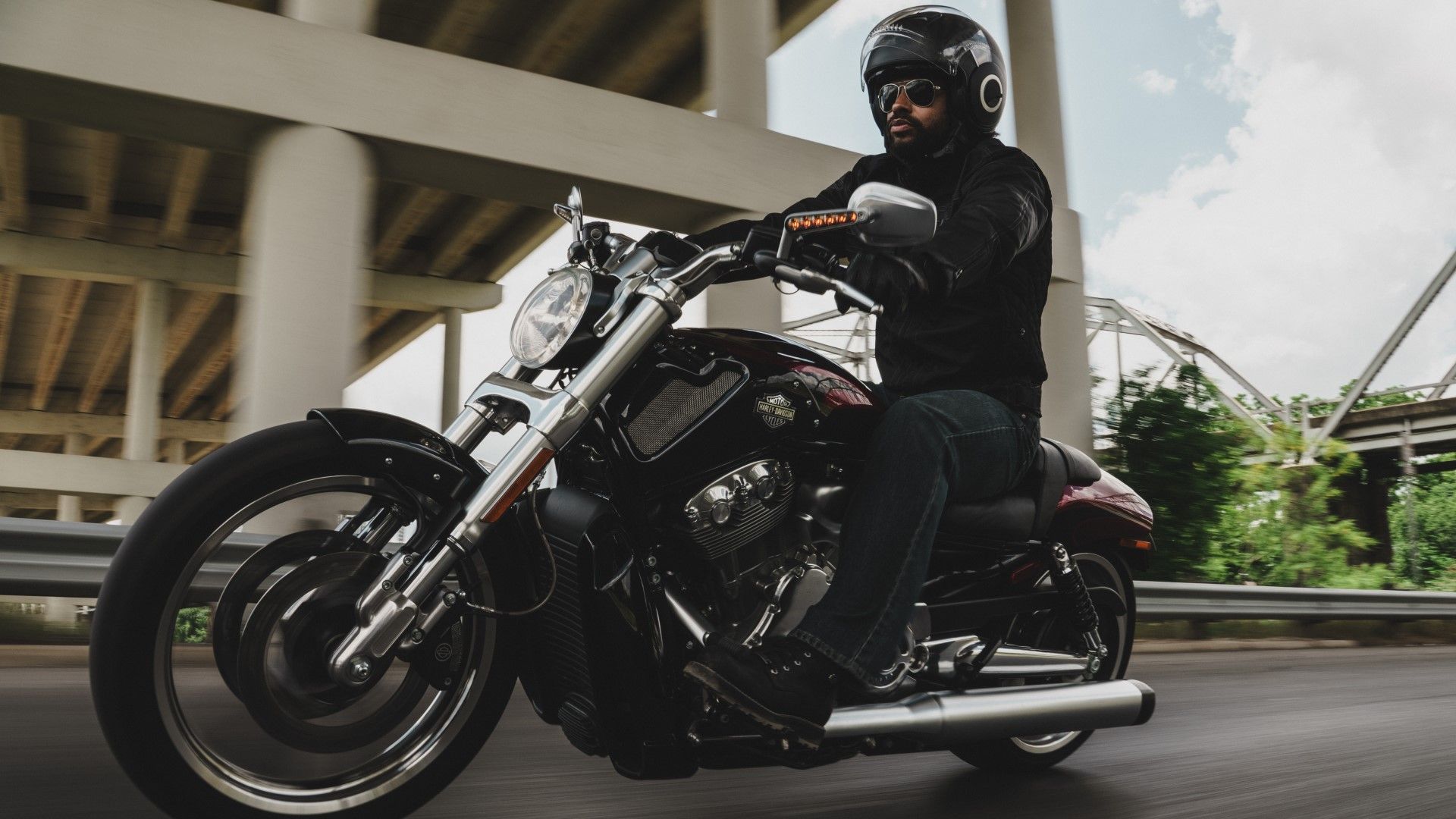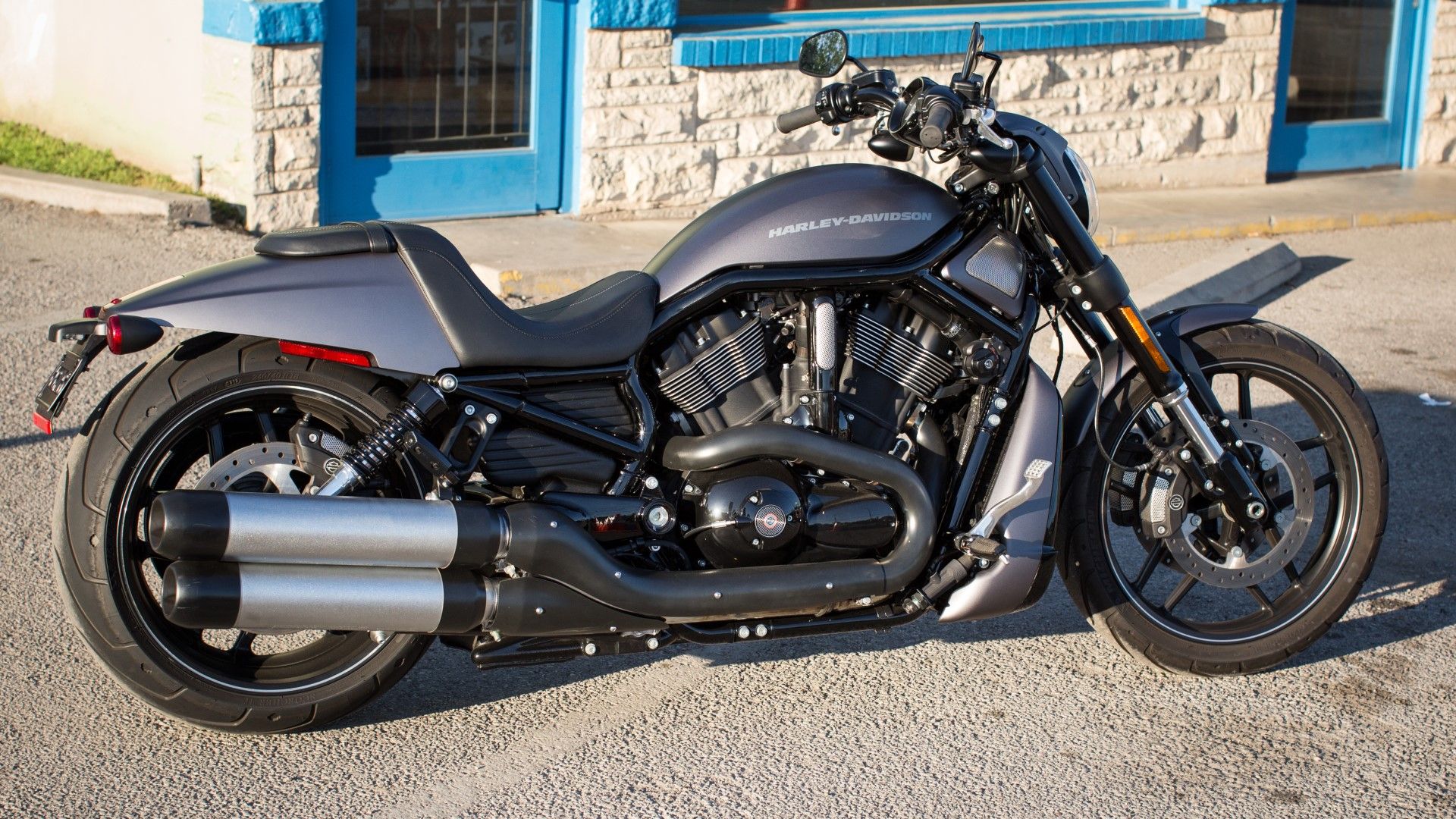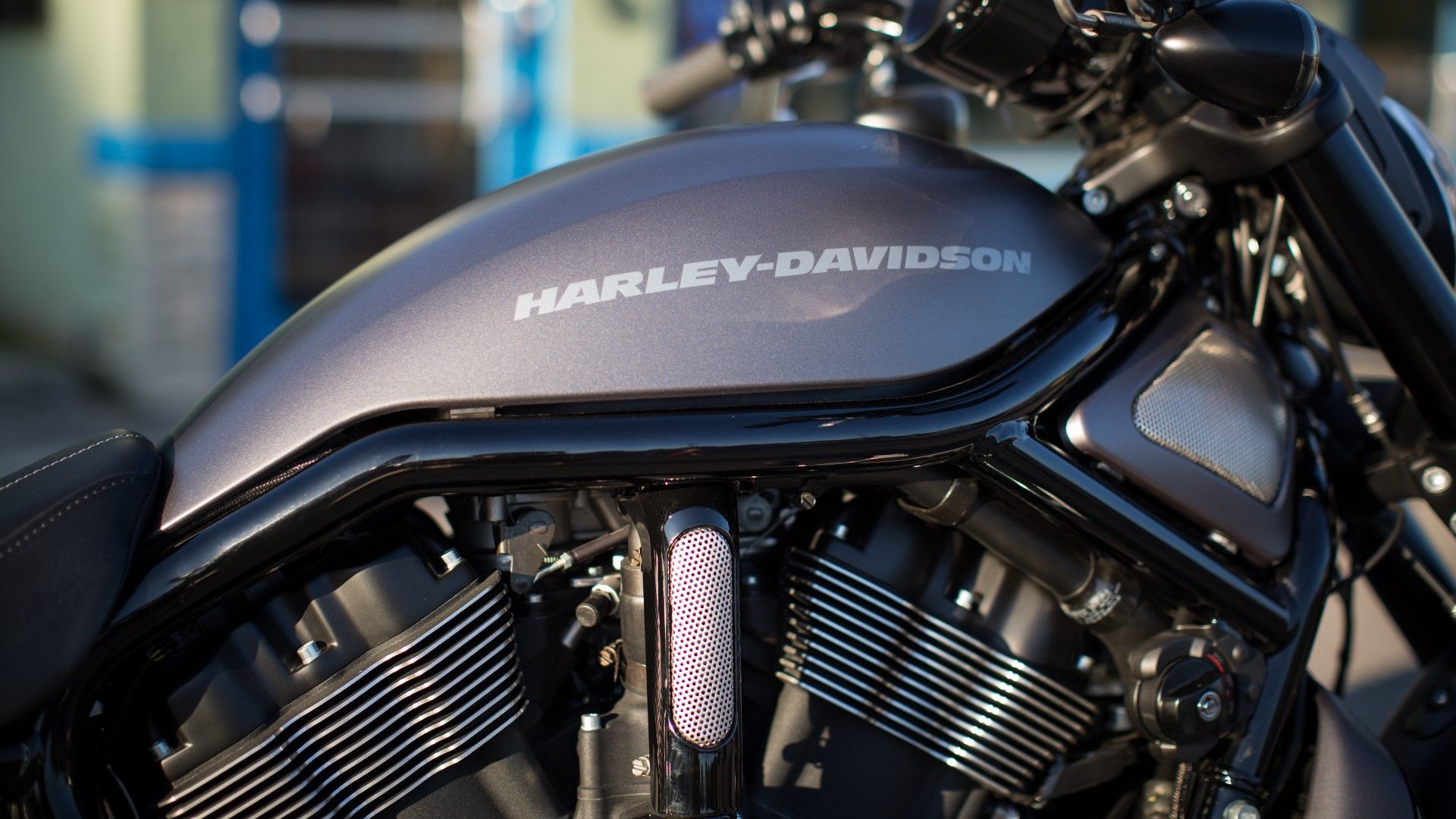Key Takeaways
- The Harley-Davidson V-Rod line of cruisers, including the Night Rod Special and V-Rod Muscle, was discontinued in 2017 after 11 design iterations.
- The main differences between the Night Rod Special and V-Rod Muscle are mostly aesthetic, but these differences give each bike a distinctive character.
- The Night Rod Special is better for long-distance touring with a more comfortable seat, while the V-Rod Muscle is tuned slightly differently for a more powerful and torque-heavy ride.
Despite its menacing good looks and impressive Porsche-sourced performance, the V-twin racing street custom (VRSC) or V-Rod line of Harley-Davidson cruisers was unceremoniously discontinued in 2017. The line featured eleven design iterations since its inception in 2001, and two of the best were the Night Rod Special (2007-2017) and the V-Rod Muscle (2009-2017).
Updated November 2023: We have updated this article on more interesting differences between the very similar and unique Harley-Davidson V-Rod Muscle and the Harley-Davidson Night Rod Special. While the major differences are confined to looks, there are a few that go skin-deep.
The V-Rod was a little bit of a departure for H-D, as it fell into the unfamiliar "cruiser-esque drag bike" category and aimed squarely at gaining a new customer base. The exposed frames and semi-minimal appointments made it look closer to 'naked bike' design specs, but this choice kept the weight down overall. For comparison, one of the best Japanese cruiser bikes and close competitors of the V-Rod was the Suzuki Boulevard M109R, which weighs 41 lbs more than the V-Rod.
Coming back to the HD stable, with so much in common, the main differences between the Night-Rod Special and V-Rod Muscle were mostly aesthetic. But these 'subtle' differences were enough to give two of the boldest and wildest Harley-Davidson motorcycles ever made distinctive characters.
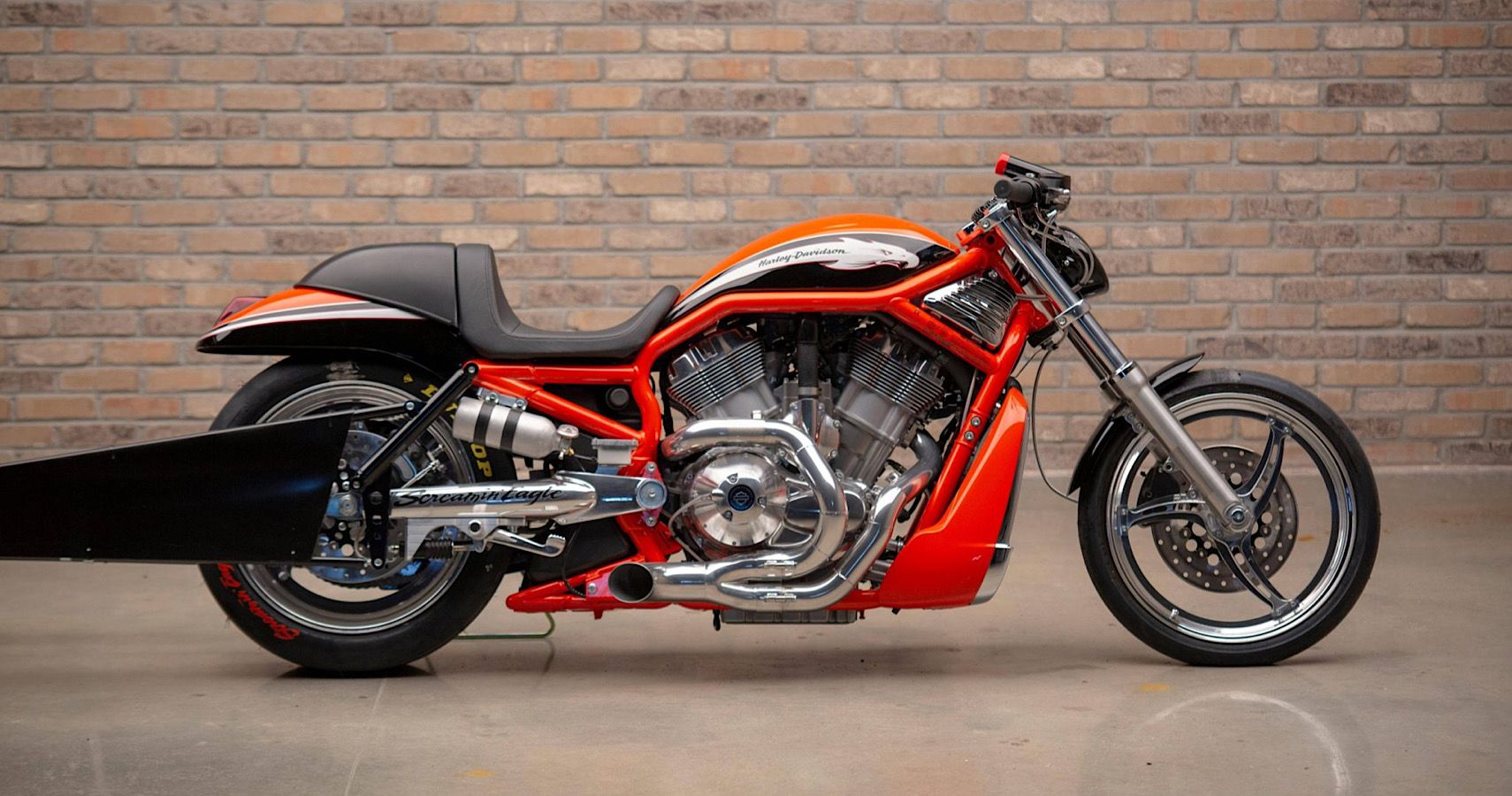
V-Rod Destroyer: The Most Powerful Harley-Davidson Ever Sold
Check out our deep dive into one of the most intense and utterly raw Harleys ever conceived, capable of 9-second ET's straight off the lot.Harley-Davidson V Rod Muscle Vs Night Rod Special: Engine & Performance
Engine Specs
|
Make And Model |
Harley-Davidson V Rod Muscle |
Harley-Davidson Night Rod Special |
|
Years |
2009-2017 |
2007-2017 |
|
Configuration |
V-Twin |
V-Twin |
|
Displacement |
1,247cc |
1,247cc (increased to 1,131cc in 2008) |
|
Power |
122 hp |
Up to 125 hp |
|
Torque |
86 lb-ft |
Up to 85 lb-ft |
|
Fuel |
Gasoline |
Gasoline |
From 2008 to 2018, power was provided to both bikes by a 1247 cc, DOHC, four-stroke V-twin engine developed by partnering with Porsche's engineering department. It was liquid-cooled, the cylinders were placed at 60 degrees, and the entire thing was belt-driven for added smoothness and less maintenance.
The Night Rod Special features 125 HP and 84 lb-ft of torque to give it a better top speed. Conversely, the V-Rod Muscle has 122 HP and 86 lb-ft, which might not seem like a huge difference, but off the line is where that extra torque will matter most.
The estimated top speed was 118 mph, and it could do the quarter-mile in about eleven seconds. While these aren't mind-blowing numbers, remember this Harley-Davidson was meant to be a hybrid of performance and cruising rather than a dragster.
Harley-Davidson V Rod Muscle Vs Night Rod Special: Looks And Styling
The V-Rod Muscle looks more like a traditional cruising bike because of its no-nonsense black paint job and oodles of exposed chrome. It has a slightly more pronounced radiator cover behind the front wheel and a slightly less protruding engine cover in front of the seat (the fuel tank is stored under the seat). The other most noticeable difference is the classic style single exhaust port on both sides of the bike. This detail is actually very important to a large segment of H-D riders who value tradition over flash.
The most distinguishing feature of the Night-Rod Special is the fact all the chrome is blacked out. The front fork, engine, exhaust, handlebars, wheels, and frame all combine to create an ominous and powerful-looking specimen. Various complementary colors were available over the years, but only the rear fender, engine cover, and radiator cover received any of them. Completing the aggressive look is a straight shot, double-barrel stacked exhaust system mounted on the right side with brushed finish dual mufflers.
Harley-Davidson V Rod Muscle Vs Night Rod Special: Cool Features
Feature List
|
Make and Model |
Harley-Davidson V Rod Muscle |
Harley-Davidson Night Rod Special |
|
Frame |
Steel perimeter upper frame; Bold-on lower frame rails |
Steel perimeter upper frame; Bold-on lower frame rails |
|
Front Suspension |
Non-adjustable inverted 43mm forks with 4 inches of travel |
Non-adjustable inverted 43mm forks with 4 inches of travel |
|
Rear Suspension |
Spring-preload adjustable shocks with 2.9 inches of travel |
Spring-preload adjustable shocks with 2.9 inches of travel |
|
Front Brakes |
Dual 320mm discs with four-piston calipers |
Dual 300mm floating discs with four-piston calipers |
|
Rear Brakes |
316mm disc with two-piston calipers |
300mm disc with four-piston caliper |
|
Notable Features |
Assist/ Slipper Clutch with reduced lever effort, Optional Smart Security System |
Standard ABS, Belt Drive, Electronic Sequential Port Fuel Injection |
This is an area where the V-Rod outshines its brother. Possibly to keep costs down, the Night-Rod (left) has traditional round front turn signal lights that hang off the handlebars. The V-Rod features a far more sophisticated design, with an integrated LED light bar that serves as both the side mirror arm and the turn signals. This was the first time H-D offered this as a stock feature.
Big 300mm disc brakes with 4-piston Brembo calipers and standard ABS provide the stopping power while dual coil-over, adjustable rear shocks keep you on the road.
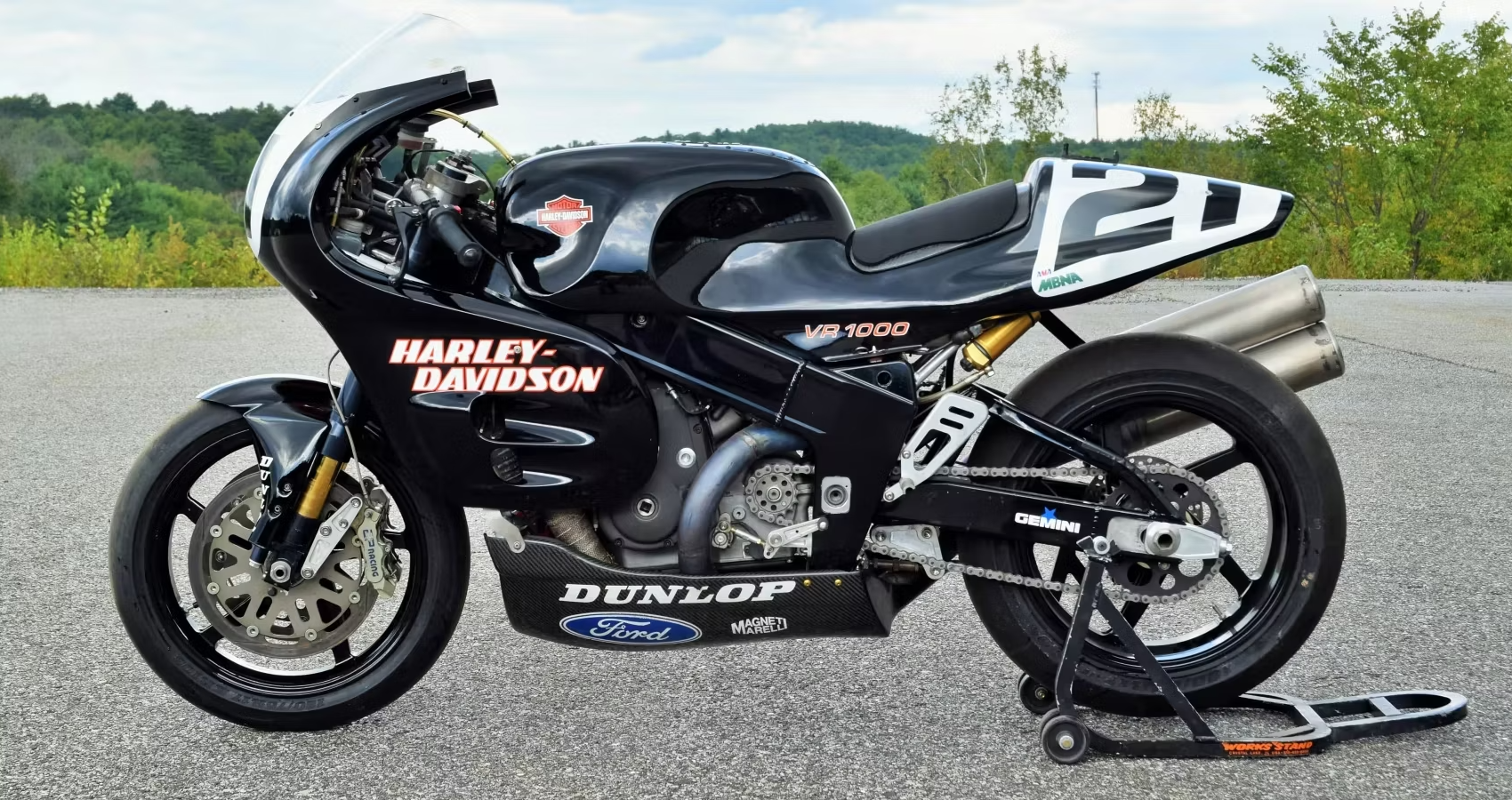
10 Harley-Davidson Motorcycles That Deserve A Comeback
For all of Harley’s successes, the manufacturer has had a fair few misses. These bikes, however, deserve a comeback.Harley-Davidson V Rod Muscle Vs Night Rod Special: The Bigger Brute?
Dimensions And Weights
|
Make And Model |
Harley-Davidson V Rod Muscle |
Harley-Davidson Night Rod Special |
|
Wheelbase |
67 inches |
67 inches |
|
Curb Weight |
673 pounds |
637 pounds |
|
Seat Height |
27.8 inches |
25.6 inches |
|
Front Wheel Size (Tire dimensions) |
19X3 inches; five-spoke cast aluminum wheel (Michelin Scorcher 11 - 150/80X17) |
19X3 inches; five-spoke cast aluminum wheel (Michelin Scorcher 11 - 120/70X19) |
|
Rear Wheel Size (Tire dimensions) |
18X8 inches; five-spoke cast aluminum wheel (Michelin Scorcher 11 - 240/50-X16) |
18X8 inches; five-spoke cast aluminum wheel (Michelin Scorcher 11 - 180/60X17) |
The V-Rod has a more aggressive-looking rear fender. It's wider and curved to almost hug the rear wheel while still fitting smoothly with the wide rear seat. Integrated at the end is a slim LED light bar for braking and turn signals, and because of that, the license plate holder is mounted on the side of the fender, which brings more attention to the huge rear wheel.
The Night-Rod Special uses two traditional round lights on either side of the tapered rear fender for turn signals but also integrates a small rectangular LED bar for braking. The rear fender is a more traditional design, flowing from the sides of the seat and sitting lower over the tire with the license plate hanging down from there.
The talking point, however, in both these Harleys' are its mammoth rear tires. A mammoth 18-inch rear tire measuring 240/40R puts the power to the pavement on the V-Rod Muscle. The Night Rod Special is slightly subdued with a 180-section 17-inch rear wheel.
V-Rod Muscle Vs Night Rod Special: Which Is The Better Harley-Davidson?
The Night-Rod Special is better for long-distance touring than its brother for two reasons. Most importantly, it features a more comfortable and roomy seat. The passenger seat is rather small compared to most people embarking on long highway cruises won't have passengers. The seat is stiffer and tighter, and the back has a more pronounced upright profile, which is perfect for bearing down as you drag race.
If cruising around town is more your speed, the bike also features a wider pillion for a passenger to join you, but it's still not very substantial. Secondly, the V-twin is tuned slightly differently. It sure is high on power and torque, but Harley has made it more tamable to ride, as it isn't a 'drag-bike' for the road, unlike the V-Rod muscle.
V-Rod Muscle Vs Night Rod Special: How Much Does The Exotic Harley-Davidsons Cost Today?
In the last year of its production, the Harley-Davidson V-Rod Muscle started with an MSRP of $17,449. The Night Rod Special was a bit more expensive, with a starting MSRP of $17,849. Today, a used V-Rod Muscle sells for an average of $10,000; used Night Rod Specials are even higher, selling for an average of close to $12,000.

